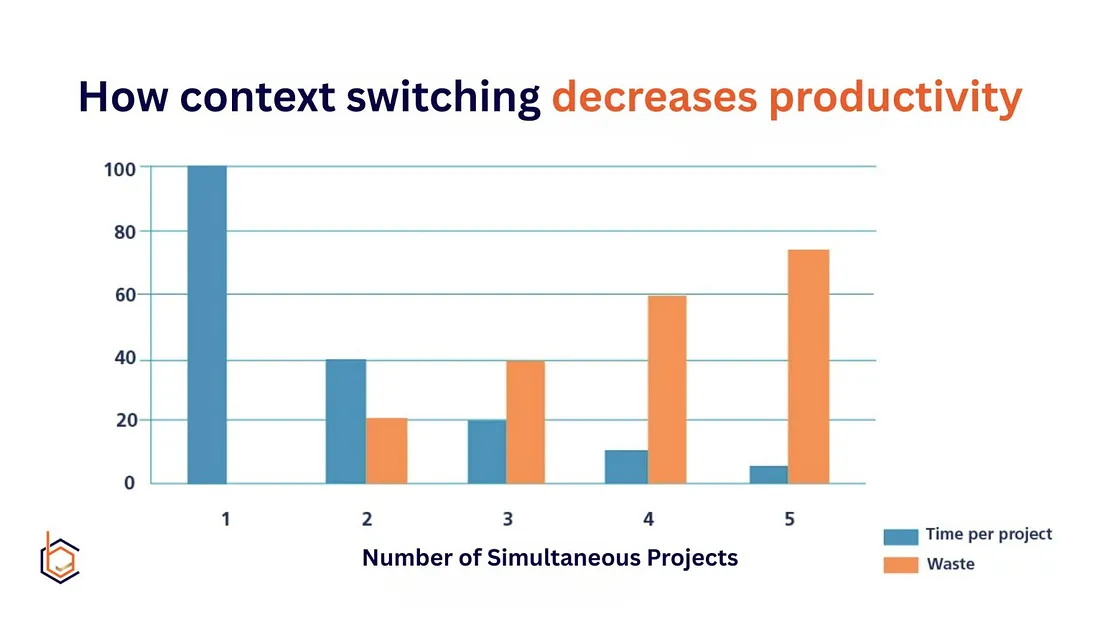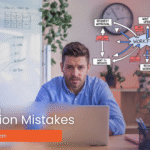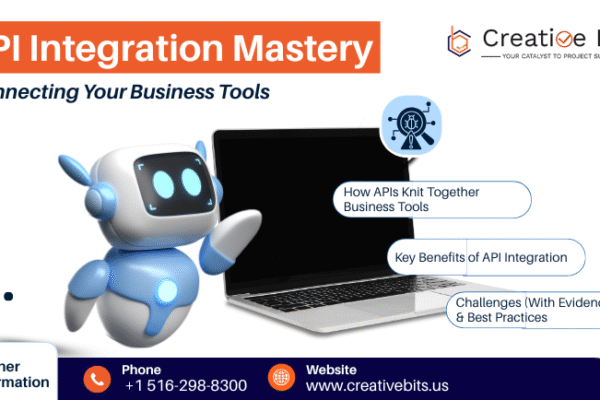Most teams aren’t burned out from doing too much work; they’re burned out from context switching. Jumping between emails, meetings, documents, and task boards might feel like staying productive, but it’s actually one of the biggest hidden drains on your team’s energy and focus.
You might recognize the symptoms:
- Constantly switching between communication tools and task updates
- Starting one task, only to get pulled into something else
- Taking 20 minutes to refocus after every interruption
It feels like you're always working, but never making real progress. This isn’t just a time management issue. It’s context switching, and it’s quietly destroying productivity.
What Is Context Switching (And Why It’s So Costly)?
Context switching happens when your brain has to shift focus from one task to another, especially when those tasks are very different. Each time this happens, your brain needs to reorient itself. That takes mental energy and time.
According to some studies, it can take up to 23 minutes to fully refocus after a distraction. Now multiply that across a team of ten, each switching tasks five to ten times a day. You’re losing hours of productive time without even realizing it.
Even worse, context switching leads to:
- Shallow work (instead of deep focus)
- Mistakes and missed details
- Increased stress and cognitive fatigue
- Lower satisfaction and engagement at work

What Causes Context Switching?
There are three common causes:
- Too Many Tools:
Switching between different apps for communication, task tracking, document storage, and reporting fragments your workday. - Poorly Designed Workflows:
When processes aren’t clearly defined, people end up doing reactive work, shifting priorities constantly. - Lack of Visibility:
When teams don’t have a clear view of who’s doing what and when, work overlaps, priorities get confused, and people keep switching gears.
How to Reduce Context Switching Without Slowing Things Down
Reducing context switching doesn’t mean doing less, it means creating more flow and focus. Here are some ways to get there:
Centralize Work in One Tool
Using a central platform like monday.com can significantly reduce tool-hopping. It gives teams a single place to:
- Track tasks and timelines
- Collaborate on files and updates
- See the bigger picture at a glance
Fewer tabs. Less confusion. More clarity.
Build Smarter Workflows
When your workflows are intentional, not just patched together over time, your team can follow a clearer path from start to finish.
It’s not about over-engineering. It's about creating workflows that make it easy to know:
- What needs to be done
- Who is responsible
- What happens next
Start by mapping your core processes visually. If explaining your process takes a long time, it’s probably too complicated.
Automate the Repetitive Stuff
Workflow automation takes small, recurring tasks off your team’s plate. For example:
- Automatically notify someone when a task is completed
- Auto-update status fields as things progress
- Send reminders without someone needing to check in
Less manual work = fewer interruptions = more time for deep focus.
Incorporate AI Where It Makes Sense
We’re not talking about replacing people, we’re talking about using AI to support people.
AI can help by:
- Summarizing project updates or meeting notes
- Flagging risks before they escalate
- Prioritizing work based on impact
When used well, AI becomes part of your workflow, not an extra thing to manage.
Final Thoughts
Context switching is easy to ignore because it doesn’t feel like a crisis. But over time, it’s one of the biggest reasons teams feel overworked and underproductive.
The good news? It’s fixable.
By reducing tool overload, building clear workflows, automating routine tasks, and thoughtfully integrating AI, you give your team the gift of focus. Focus is where great work happens.
What’s Next?
At Creative Bits, we help teams build better systems that reduce chaos and create momentum. If you're noticing your team is busy but not productive, it might be time to rethink how your work is structured.

 monday.com Services
monday.com Services


